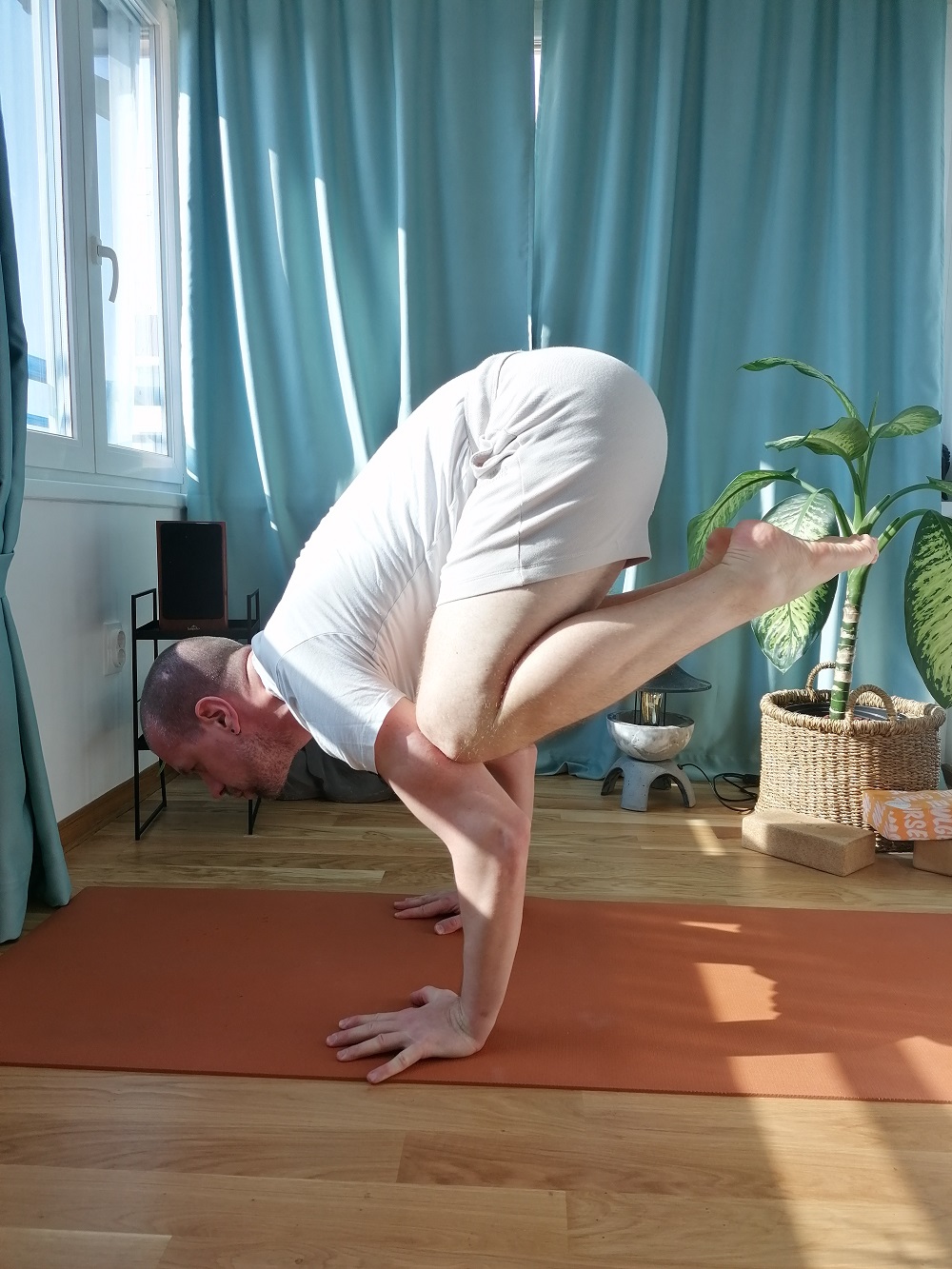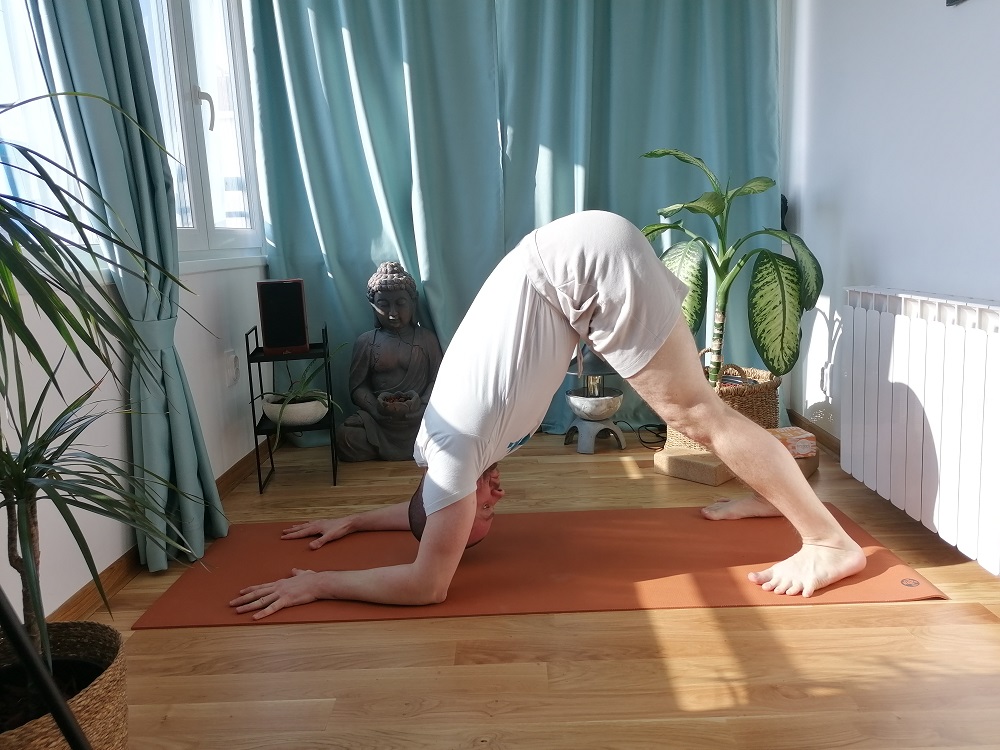Most people’s first association when they think of yoga is two things, stretching and mantras. A third thing that can be added here is yoga relaxation, more precisely yoga nidra. Very few people associate yoga with physically demanding poses. There is still an opinion that yoga is intended for people who have certain physical problems. Therefore, it is believed that these problems would be solved or alleviated through the practice of yoga.
However, yoga is far more than what most people think it is. Yoga itself can help us on many different levels of our existence. Through the practice of yoga, all of our bodies can benefit. If you are not familiar with it, according to yoga philosophy, every person has seven bodies. These are the physical, etheric, astral, mental, spiritual, cosmic and nirvanic bodies. In this text, we will deal with our physical body and what benefits our physical body can have through yoga practice.”
Are All Yoga Practitioners Immediately Ready for Strength Poses, More Precisely Yoga Arm Balances?
In addition to the generally accepted opinion that yoga poses are exclusively related to stretching, it should be kept in mind that through yoga practice, our physical body can be strengthened to a large extent. Arm balance poses certainly belong to that group of yoga poses. Certainly, in order to reach that stage, it is initially necessary to prepare the body itself for poses that lead to the strengthening of our physical body. This is achieved by practicing poses that are “simpler,” poses that lead to fine stretching of the tendons, groin, muscles, ligaments, the opening of the hips, and stretching of the back. Consequently, it can be easily concluded that a certain period of time is needed to prepare the body for more demanding, challenging poses.
Sometimes, practitioners who are at the beginning of their yoga practice ask me how long it will take them to prepare their body for strength poses and arm-balance poses, all in the desire to master them as soon as possible. My answer to that question has never been, nor will it ever be, universal. Every practitioner is a story for himself. I can usually give an answer after a few training sessions together. After which, I can realize the current limitations that the practitioner is facing. In that way, I can create a yoga practice that will be in accordance with the needs of the practitioner’s body. Some practitioners have more open hips; some don’t. Some practitioners have finely stretched tendons, groin, muscles, and back; some do not. Having that in mind, with some practitioners, I can already start practicing arm balancing poses in the first month or two. If nothing more, then at least we can go through the basics and preparations for entering the poses. While on the other hand, with some practitioners, much longer work is needed. A longer yoga practice, within which the emphasis is placed on opening and stretching the entire body. I have found from experience that practitioners who start from scratch, practitioners with whom I have to work longer, end up being more committed during their yoga practice, compared to practitioners who took less time to start practicing arm balancing poses.
Why is it so?
The reason is very simple. As in life, when we devote much more time to achieving a certain goal, we will value it more in the end. We will be more dedicated to achieving the next one because we realize how much effort, energy and time it took us to reach the first goal. That is why practitioners who start from scratch are statistically more committed when it comes to yoga practice compared to practitioners who have a so-called “advantage” at the very beginning. We can discuss the so-called 10,000 hours theory, but we won’t talk about it now, maybe on another occasion.
Preparation is Always Half the Job
It is common knowledge that preparation is half the job. The same can be applied to yoga. If the practitioner wants to master a certain pose that is currently a big challenge for him, preparation is inevitable, and it certainly represents half the job. If the preparation is missing, the practitioner may face possible injuries. That is why it is very important that the yoga practice is carried out with an experienced teacher, a teacher who is familiar with all the variations of the poses that are practiced. It is important that the teacher encourages the practitioner in his practice, all for the purpose of his progress; however, the teacher must not allow himself not to see where the current limits of the practitioner are. Yes, there should be an encouragement, but no encouragement that is not based on realistic indicators.
The Strength of the Physical Body is Manifested in Balances
When we talk about balancing poses, they certainly represent poses through which practitioners can express the strength of their physical body. Arm balancing poses are certainly the most challenging. These poses can be divided into beginner, intermediate and advanced poses. In other articles, I will deal with individual poses.
Regardless of which poses the practitioner practices, it is very important to do preparatory poses and variations of complete poses. In that way, the practitioner prepares himself both physically and mentally for the full pose. In this way, the practitioner gains an insight into what a certain pose requires and what he should pay more attention to.
Depending on the type of pose, the variations for it can be static or dynamic. There are no rules; both types can be challenging. It cannot be said that static poses are easier or vice versa. Static poses mean staying in the pose for one minute at most. Dynamic poses imply a certain number of repetitions. That number can be five, ten, or even up to twenty repetitions.
In arm balancing poses, it is important to properly activate the bandhas (muscle contractions). By using bandhas, the flow of energy inside the body is controlled. Bandhas are very important in balance poses. Focus is also very important. The practitioner achieves focus by looking at a specific point. In addition to the bands and gaze, breathing is the third very important component in arm balancing poses.
Practicing arm balances, the practitioner, on a physical level, strengthens primarily the upper part of the body, arms, shoulders and chest. Also, if the poses are performed correctly, in addition to strength, the practitioner also works on even finer stretching of the arms and legs, as well as opening the entire body. By practicing arm balances, the practitioner can get rid of certain fears and become mentally stronger.
When practicing arm balances, especially when doing their variations, the practitioner should never forget to use blocks.
These poses, in addition to everything mentioned above, lead to an increase in the flexibility of the practitioner’s body. Keeping in mind this fact, such poses should be approached with a lot of attention. You must not be allowed to get carried away by practice and the desire to prove yourself. The current inflexibility of the body can be the reason for injuries. Be aware of the (in)flexibility of your body, especially in arm balances.
Conclusion
Many believe that arm balances represent and mark the peak of the yoga practice of every practitioner. Unfortunately, this is just a delusion; your ego is in effect, don’t forget that we are made up of seven bodies. The physical body is only one of the seven. Become aware of it, and make your yoga practice fully aware.









